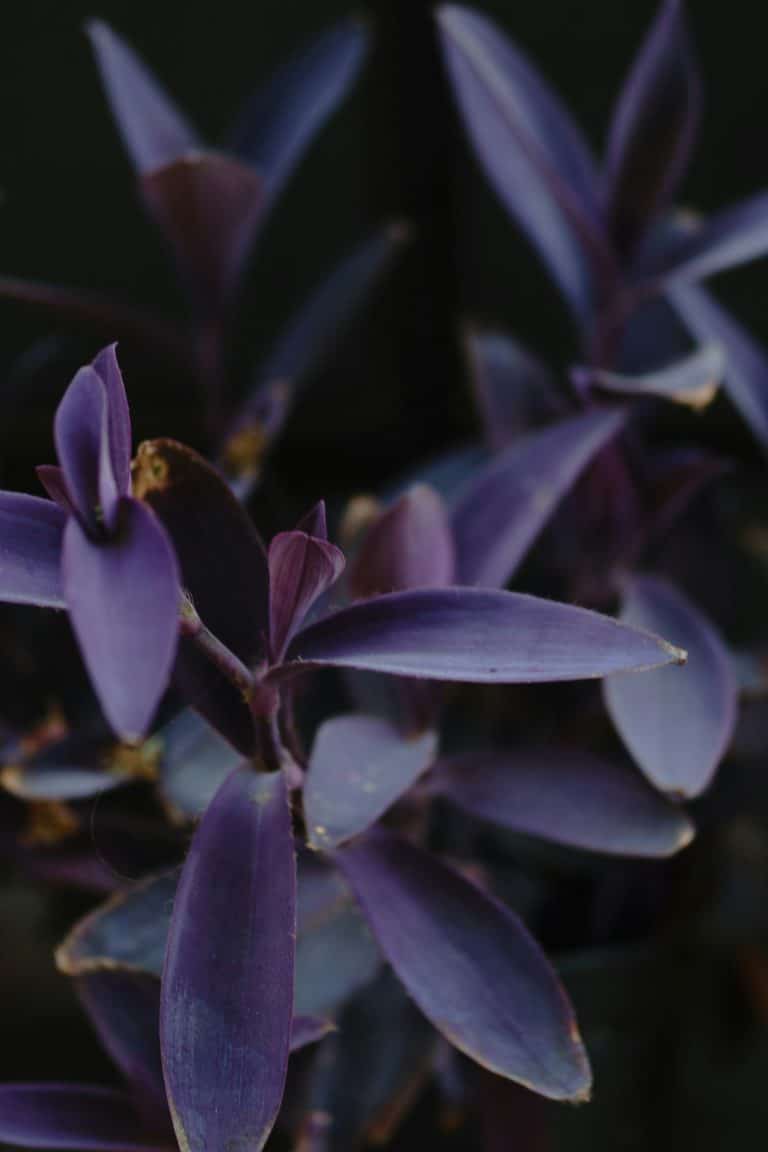5 Pet Safe Purple Houseplants We Love (& Where to Buy!)
Looking for pet-safe purple houseplants? These non-toxic favorites, grown in our Brooklyn community home, are stylish, safe, and easy to grow.
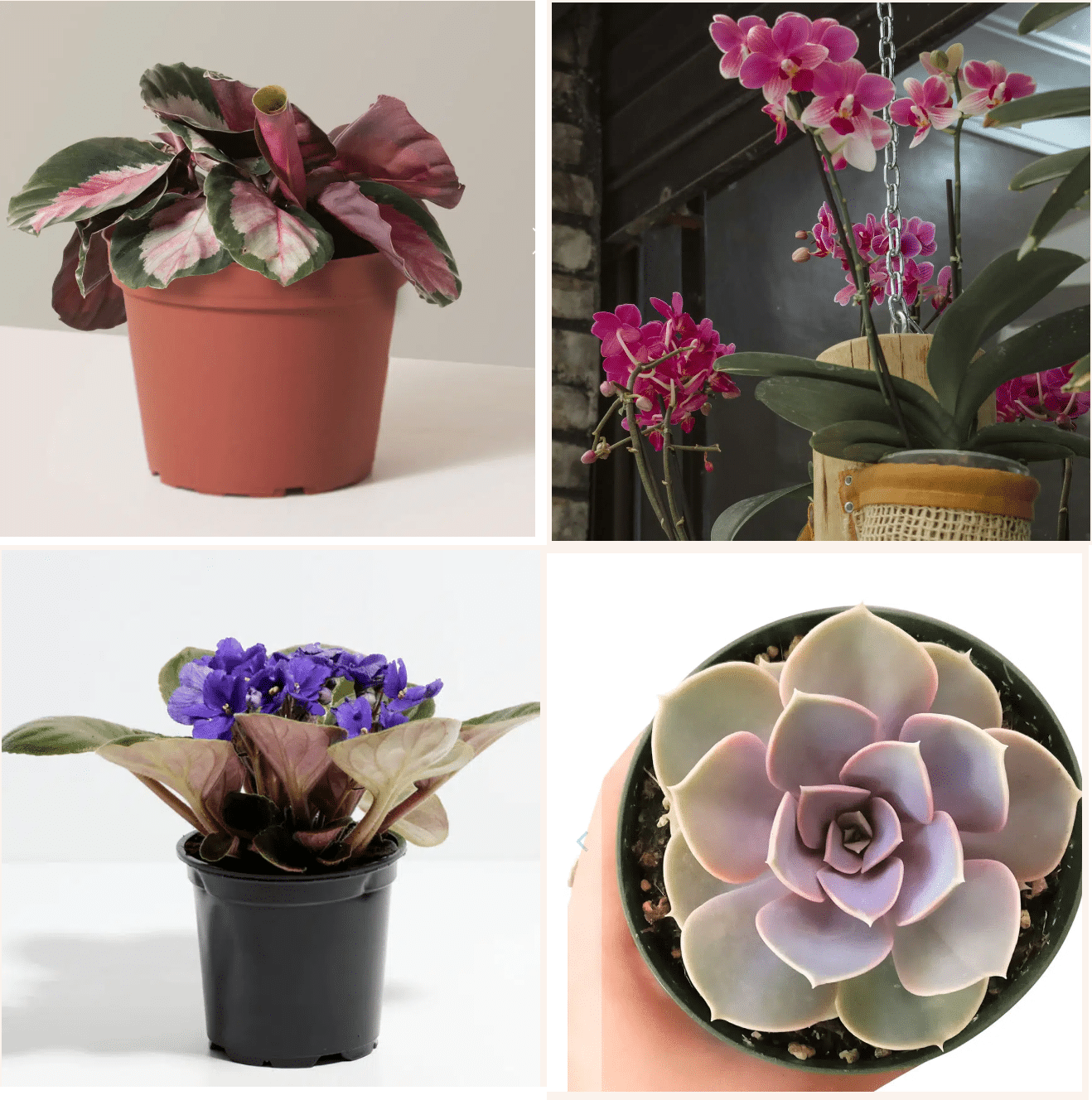
When you purchase through links on our site, we may earn an affiliate commission, which helps sustain our blog!
Purple houseplants are the secret sauce to a vibrant, stylish home—bold yet soothing, dramatic yet calming. But if you’ve got curious pets at home like we do – we have two cats! – the hunt for non-toxic purple beauties can feel like threading a needle! According to the ASPCA, many colorful plants are harmful to cats and dogs. That’s why we’ve pulled together this list of stunning pet safe purple houseplants—each one vetted for safety and style. Let’s dig in and find your next favorite purple foliage!
Read also: Our indoor plants not toxic to cats
Summary:
What are the best pet-safe purple houseplants you can grow indoors?
The best pet-safe purple houseplants include African Violet, Purple Calathea, and Purple Bromeliad, Purple Orchid, and Echeveria. All are non-toxic to cats and dogs, easy to grow indoors, and add bold color to your space. We grow these in our Brooklyn community home and share trusted places to buy them below.
Snapshot of our Top 3 picks(Swipe left)
1. Purple calathea

2. Purple Orchid

3. Purple Bromeliad
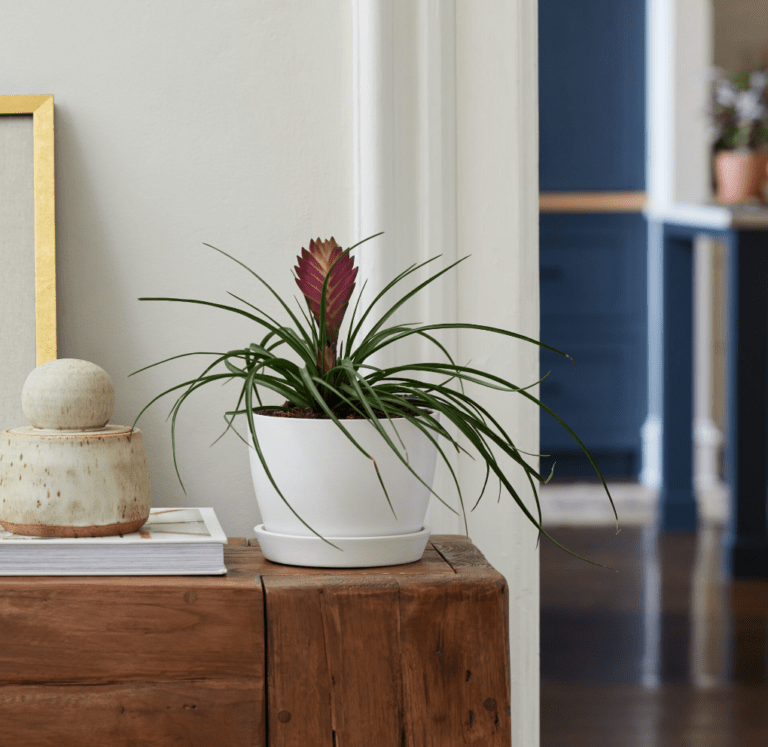
Here are our 5 pet safe purple houseplants
1. Echeveria
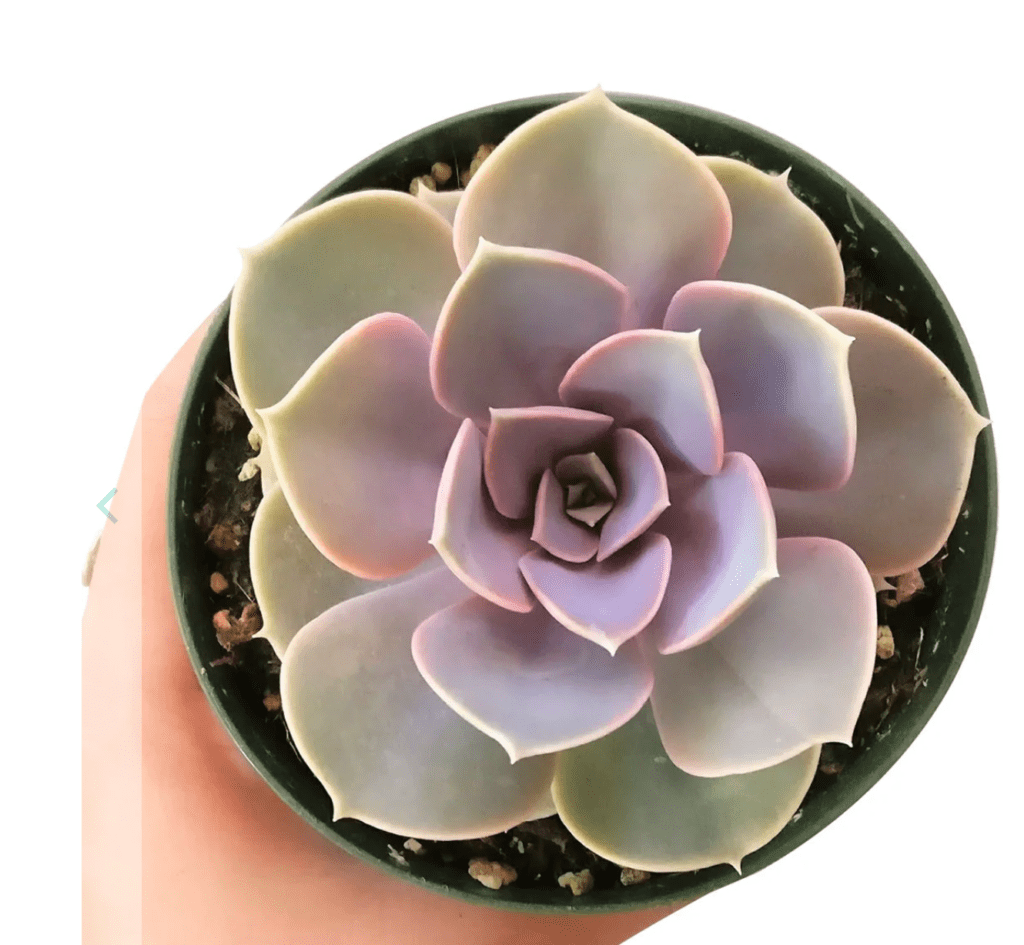
Pet safe
Bright light
Grows upto 1 feet
South facing windows
Pet safe
Bright light
grows to 1 feet
South facing windows
We love growing Echeverias on sunny windowsills where their neat rosettes really shine. The leaves come in soft purples, lilacs, and silvery blues—plump, waxy, and shaped like lotus petals. While they don’t bloom often indoors, when they do, we have seen arching stems topped with small pink-orange bell flowers!
These succulents stay compact, usually under 8 inches tall, but older ones can slowly stretch. We often tuck them into shallow bowls or minimalist ceramic pots where their symmetry becomes a centerpiece!
Care tip:
- Echeverias thrive in bright, direct sunlight and should be watered every 2-3 weeks.
- Ensure good drainage. Watch for stretched-out leaves as a sign it needs more light.
- Avoid getting water on the leaves to prevent rot.
Propagation tip:
- Gently twist off a healthy leaf, let it dry for 1-2 days until the end calluses, then place it on well-draining succulent soil.
- Roots and new growth should appear in 2-3 weeks.
Symbolism and zodiac signs:
- Echeveria symbolizes endurance and resilience, making it ideal for the determined and practical nature of Capricorn!
Pros and cons
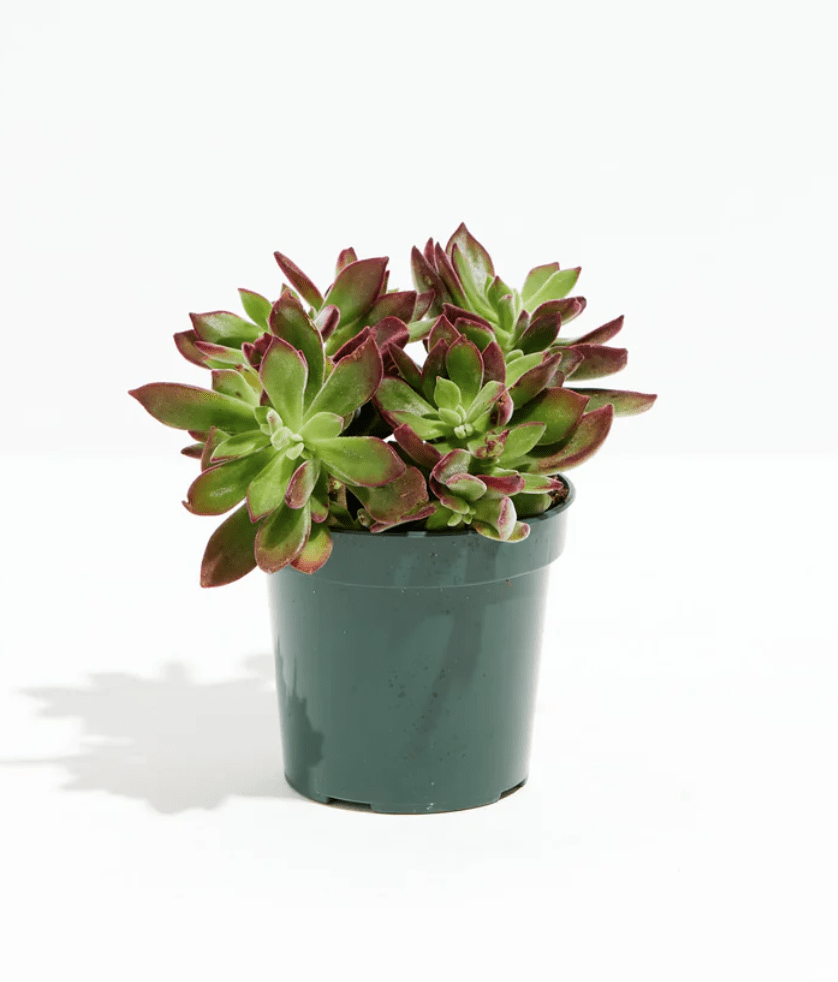
($43)
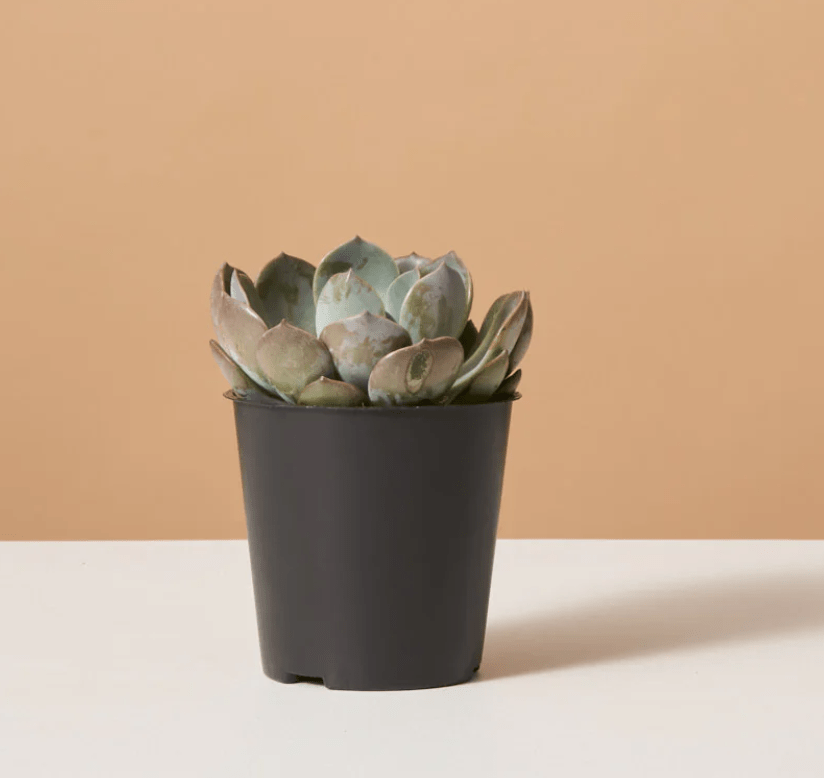
($48)

($18)
$12
“I love my Echeveria on my desk!” – Amazon Customer
2. Purple Bromeliad

Pet safe
Medium light
Grows upto 3 feet
east/West facing windows
Pet safe
Medium light
grows to 3 feet
East/West facing windows
The arching green leaves form a fountain shape, and from the center rises a bright bract—often mistaken for the flower—ranging from deep purple foliage to maroon! These bracts last for 2–4 months, while the true flowers, small and yellow-white, emerge briefly from within (or so we have heard, we haven’t seen it in ours yet!)
They usually grow 12–18 inches tall and wide, perfect for tables or bright corners. They’re easygoing in humid spots like bathrooms!
Care tip:
- Water your Bromeliad every 1-2 weeks. Central cup should be filled but not stagnant. –
- Place it in indirect light – an east-facing room. Watch for signs of dryness, like browning leaf tips, and ensure good air circulation to prevent rot.
- Bromeliads thrive on high humidity, so mist occasionally
Propagation tip:
- Wait until the “pups” (offsets) are at least one-third the size of the parent plant, then carefully cut them off with a sterilized knife.
- Place the pups in a well-draining mix of half orchid bark and half potting soil.
- It typically takes 2-3 months for the pups to establish roots. Propagation in water is not recommended for this one!
Symbolism and zodiac signs:
- Symbolizes resilience and uniqueness, making it a great match for the determined and resourceful Scorpio
Pros and cons
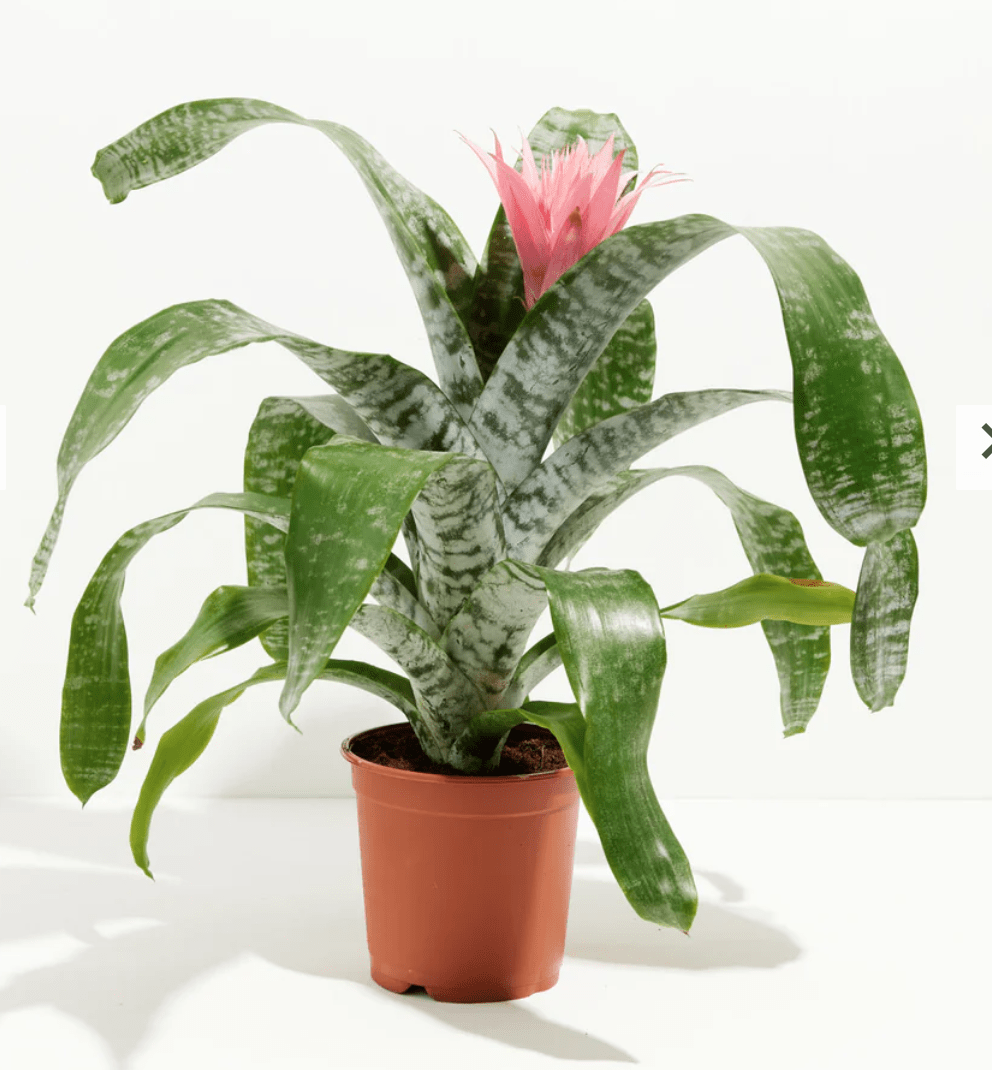
($58)
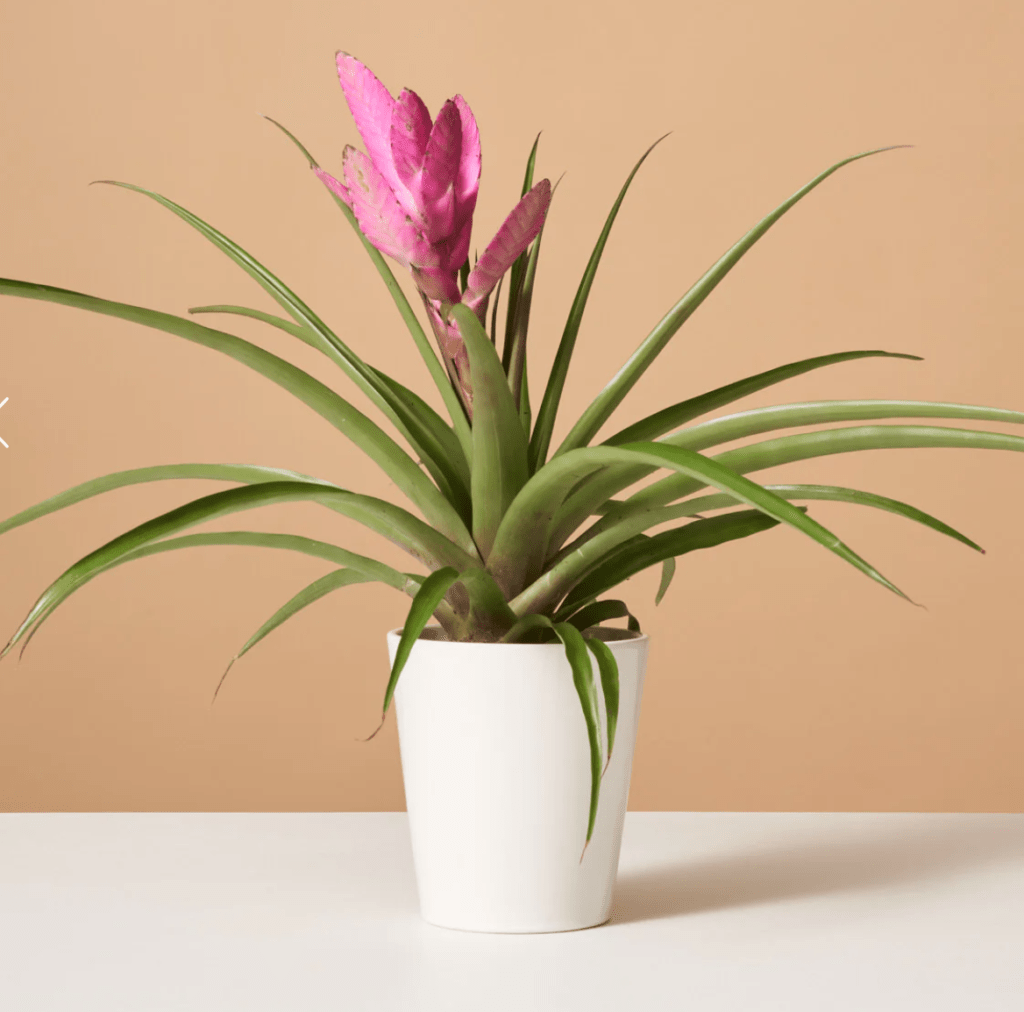
($78)
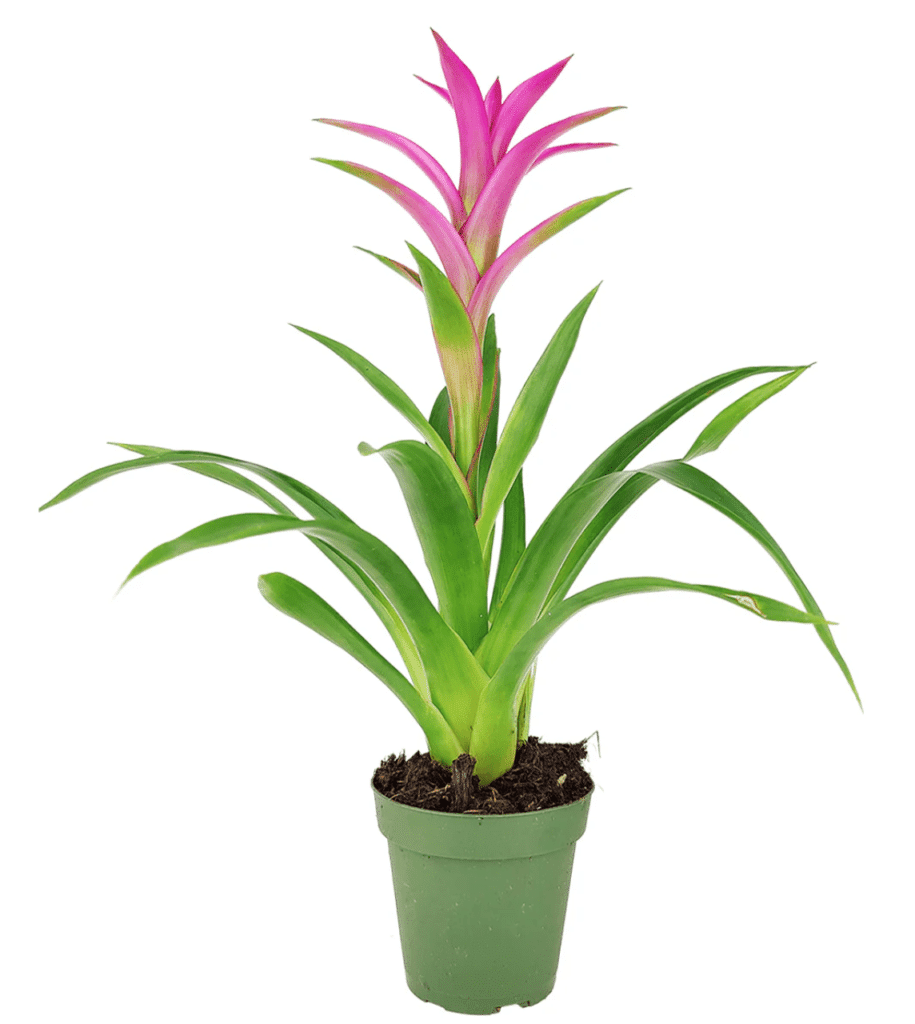
($46)
$29
“These vibrant colors in the flowers are like having bouquets all year long!”
3. African Violet

Pet safe
Medium light
Grows upto 2 feet
West/east facing windows
Pet safe
Medium light
grows to 2 feet
West/East facing windows
They have fuzzy green leaves form a soft mound, and the flowers—shades of purple, violet, or even bi-color—bloom in cycles throughout the year with bright indirect light. Each bloom lasts about two to three weeks, and new buds appear regularly with proper light and care!
They stay under 6 inches tall and wide, making them perfect for desks, shelves, or tiny pots with personality. No smell, no risk—just color and cheer!
Care tip:
- Water them when the topsoil feels dry, but be careful to avoid getting water on the leaves as this can cause spots.
- Place them in a spot with bright, indirect light – an east-facing window is ideal.
- Watch for wilting or drooping, which usually means it’s time to water.
- Ensure they’re in a warm spot as they prefer temperatures between 65-75°F. Keep an eye out for crown rot which can occur if the plant sits in waterlogged soil.
Propagation tip:
- Select a healthy leaf with about 1.5 inches of stem, and place it in a small container of water, ensuring the stem is submerged but the leaf stays dry.
- Change the water weekly and roots should form in about 4 to 6 weeks.
- Once roots are an inch long, plant in small pot.
Symbolism and zodiac signs:
- Symbolizes loyalty and devotion, making it a fitting plant for Taurus, a zodiac sign known for its steadfastness and nurturing nature.
Pros and cons

($43)

($19)
$39
“The blooms keep coming in waves and stays for months!”
4. Purple Orchid

Pet safe
Bright light
Grows upto 4 feet
east/South windows
Pet safe
Bright light
grows to 4 feet
East/South facing windows
The long, arching stems carry multiple butterfly-shaped flowers that can last up to three months. Deep purple varieties bring drama without clutter. Their thick, glossy green leaves stay low while the bloom spikes can reach 18–24 inches.
We keep them in kitchens and bathrooms where their blooms hold their own!
Care tip:
- Water them once a week. Keep an eye for limp leaves, a sign of too much water or insufficient light.
- Orchids enjoy humidity, so a bathroom with a window can be ideal spots.
Propagation tip:
- Remove a keiki (baby plant) with roots, ensuring roots are at least 2 inches long.
- Plant it in a well-draining orchid mix (ideally), and keep it in bright, indirect light. Roots should establish in a few weeks
Symbolism and zodiac signs:
- The Orchid symbolizes beauty, love, and strength — apt for Virgos who appreciate detail and elegance in their surroundings.
Pros and cons
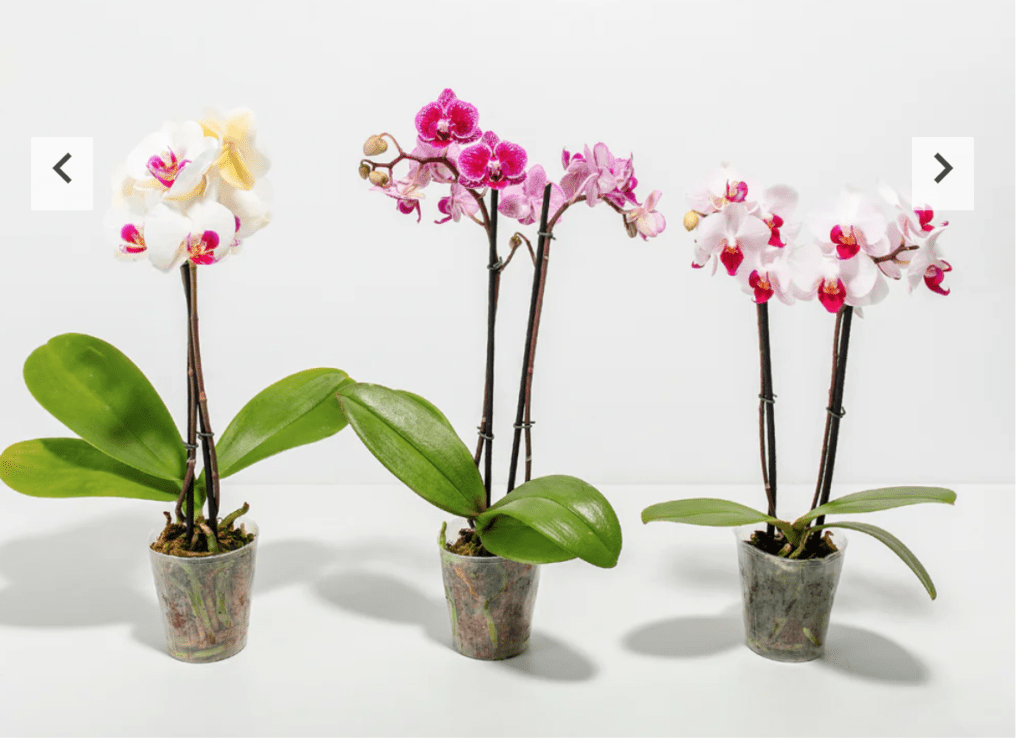
($66)
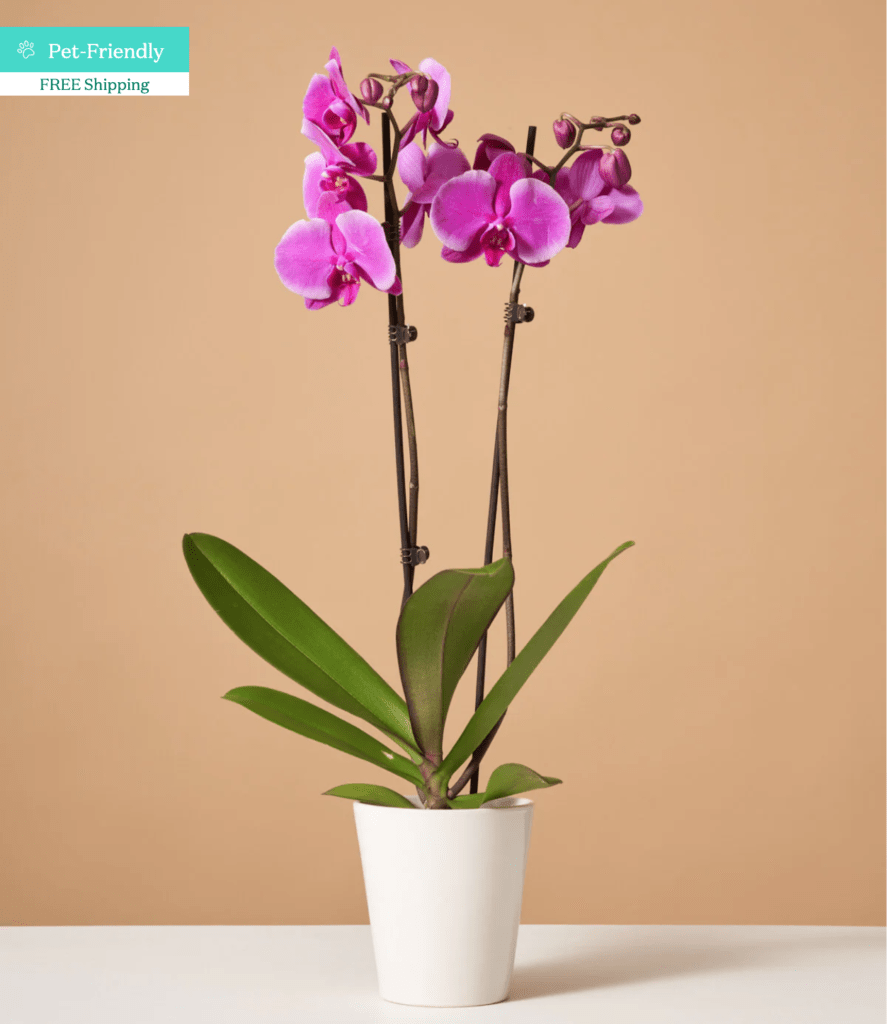
($88)
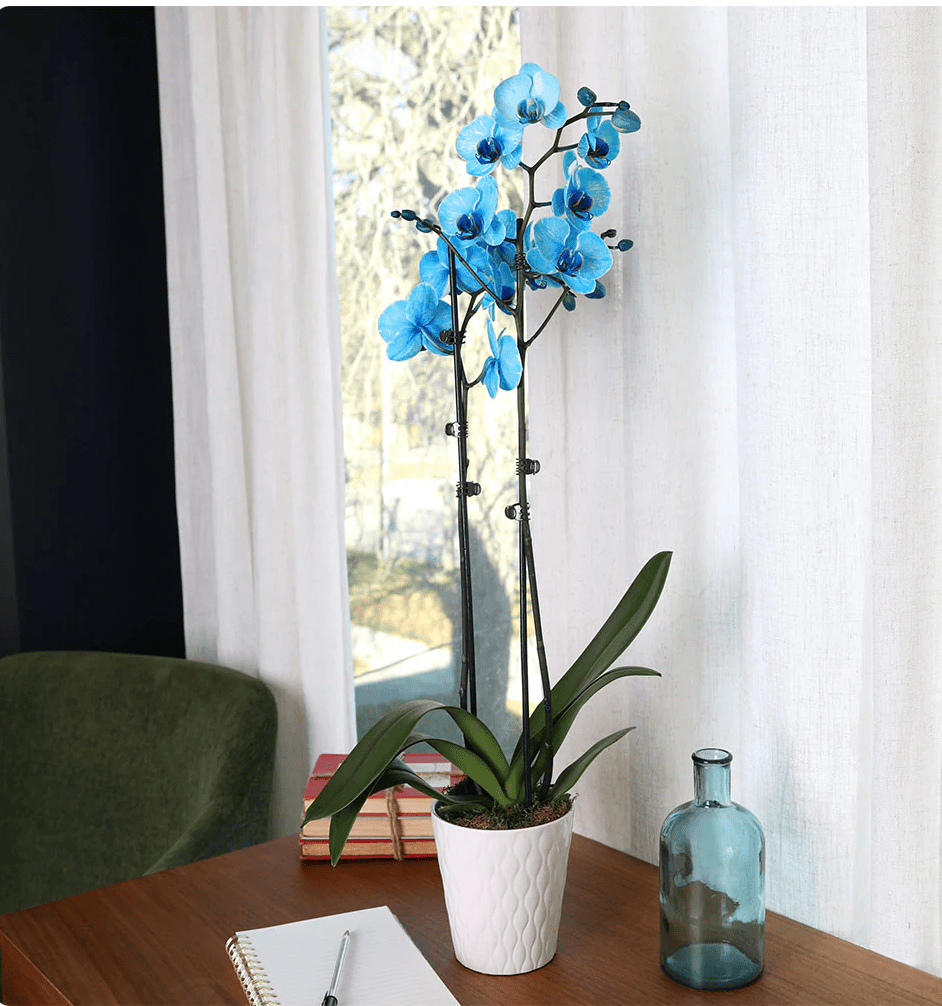
($49)
$24
“I love the elegant blooms of this orchid. It’s very easy to care for and adds a touch of elegance to my home” – Amazon customer
Pet safe
Medium to bright light
Grows upto 3 feet
East/South facing windows
Pet safe
Medium light
grows to 3 feet
East/South facing windows
We’re big fans of Purple Calatheas for their bold, rounded leaves edged in hot pink with a deep purple underside that practically glows in low light! They move with the sun—leaves rising and folding throughout the day—making them feel alive.
Mature plants reach about 12–18 inches tall and wide. We group them with other pet-safe plants in humid corners or bathrooms. There’s no scent, and no toxicity risk either!
Read also: Care and styling tips for Calathea rufibarba
Care tip:
- Water it when the top inch of soil feels dry, usually once a week, and maintain high humidity by misting regularly or using a humidifier.
- Watch for curling or browning leaf edges, which indicate it needs more humidity.
- Keep it in a warm spot away from drafts and AC and heaters please!
Propagation tip:
- Divide the root clump during repotting, ensuring each division has several leaves and roots.
- Plant the divisions in well-draining soil and keep them in indirect light with high humidity.
- New growth should appear within a few weeks. Water propagation is not recommended for this plant!
Symbolism and zodiac signs:
- Symbolizes renewal and creativity, making it a perfect match for Pisces, who are known for their artistic and nurturing nature.
Pros and cons

($58)
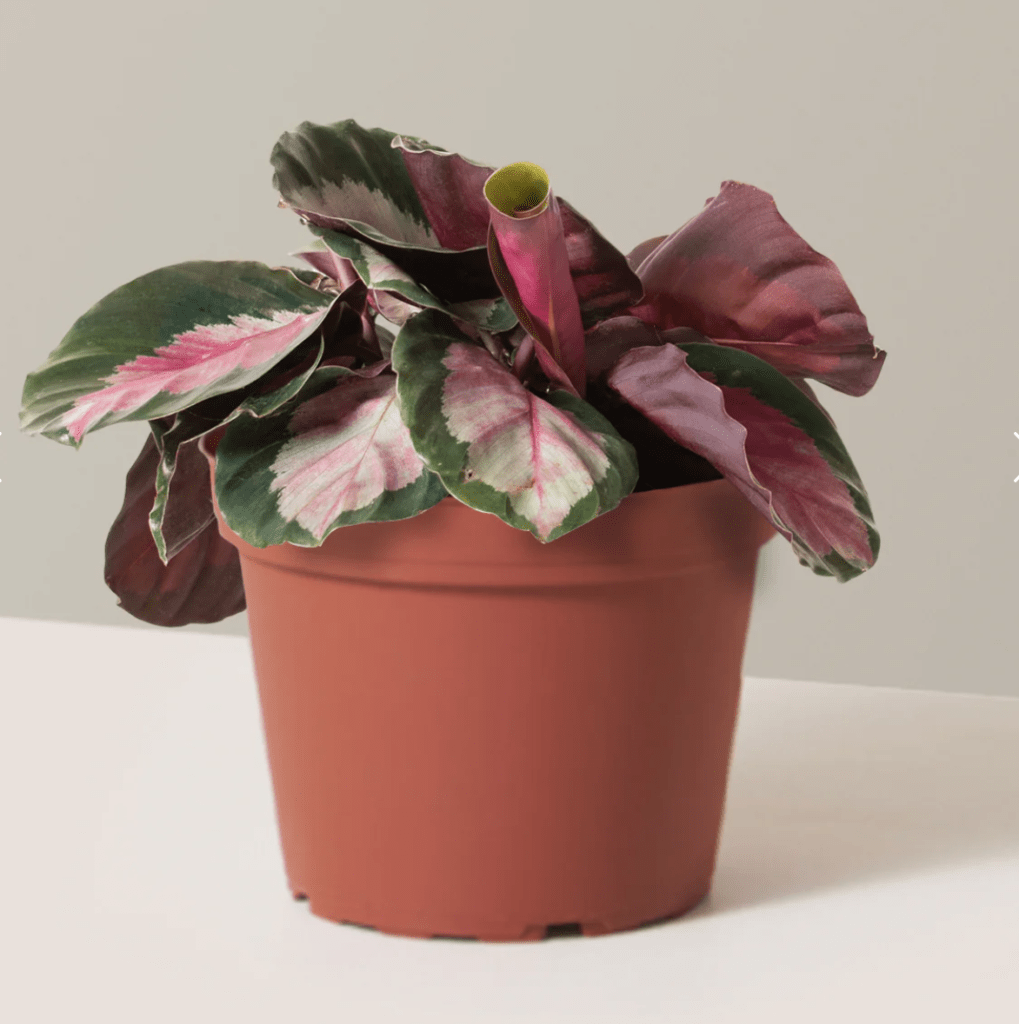
($78)

($20)
$24
“The Calathea is stunning with its vibrant patterns. It does require a bit more humidity but it’s worth it.”
Where to Place Pet Safe Purple Plants for Maximum Impact?
- Bright Windowsills (East or South-Facing)
- Our African Violets bloom like crazy on the east-facing sill—just remember to water from the bottom to keep those fuzzy leaves happy.
- Purple Waffle Plants do great here too. When we put one in a lower-light spot, it turned leggy and lost that purple shimmer. So now we stick it in a spot with bright, indirect light and rotate the pot every few days.
- Bonus: neither plant has tempted our cats, and we’ve never had nibbling incidents here.
- Bathroom Shelves or Counters
- This one surprised us, but Calatheas absolutely thrive in the bathroom. We’ve got one perched on a bamboo shelf right next to the mirror.
- The steam from showers keeps the humidity up, and we only need to mist it every few days.
- The purple undersides of the leaves pop beautifully against white tiles—plus, they fold up at night, which is oddly satisfying to watch.
- Bookshelves and Mantels
- Echeverias and Peperomias are our go-to here. They stays compact and don’t drop leaves all over the place.
- We’ve placed one next to a stack of books with a warm LED spotlight above—it honestly looks like a mini sculpture.
- No strong smell, no mess, no pet drama—just a solid little plant. (Read also: how much light to purple houseplants need)
- Hanging Planters
- We tried a Bromeliads in a hanging pot once as an experiment, and now we’re hooked. It’s leaves spills over the edges like a soft, colorful waterfall.
- As for Tradescantia: only use the verified non-toxic varieties. One of our friends learned the hard way and had to move theirs out of reach fast.
- Terrariums and Tabletop Bowls
- We use glass bowls with drainage pebbles at the bottom for our Fittonia. The color contrast inside a clear container is chef’s kiss.
- These setups work great on coffee tables or sideboards where people can actually notice the details.
- They’re also pet-safe zones—our cat sniffed once and never bothered again.
Read also: our guide to pots and planters for purple houseplants
Purple houseplants to Avoid (Toxic to Pets!)
- Tradescantia, Begonias, Purple Rubber Plant, and Purple Anthurium are toxic purple houseplants for pets!
Conclusion
Adding a splash of purple to your home doesn’t have to put your pets at risk. With these pet safe options you can enjoy all the color in your plants, just as we do, with two of our furry animals roaming safely in our indoor jungle as well!

